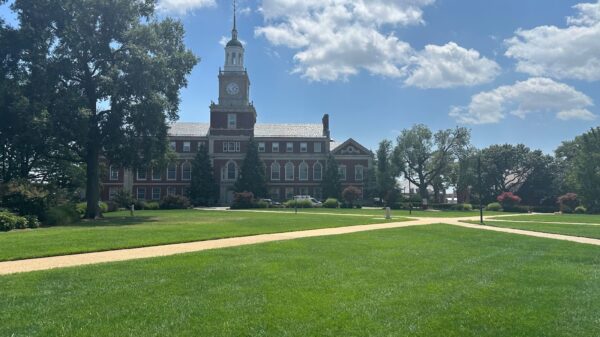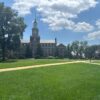By Raaziq Brown, Culture Reporter (@RaaziqMasud)
Gentrification is a phenomenon that is nationally altering urban communities. Portland, Minneapolis and Washington D.C. are the leading cities in which gentrification has a hold–the latter of which we, as Howard students, can see with our own eyes. A demographic analysis conducted by Governing.com concluded that between 2000 and 2013, 54 out of 179 census tracts in Washington D.C. have been gentrified. This number is a significant increase from the five gentrified census tracts that existed between 1990 and 2000.
“In 2000, I saw the earliest changes of gentrification,” said Wanda Henderson, owner of the hair salon and barbershop Wanda’s on 7th. “10 years ago, in 2007, I saw the beginning of redevelopment.” Over the past decade, many D.C. neighborhoods have changed in appearance, both structurally and in terms of population.
The effects of gentrification on varying communities are both negative and positive. From the viewpoint of the community developer and residents of middle-to-high socioeconomic status, gentrification is change for the better. Neighborhoods are given cleaner streets, ethnic diversity, healthier food options and modern architecture. On the other hand, the residents of lower socioeconomic status may view gentrification as the reason for many of their monetary troubles. The influx of renovation due to gentrification results in a significantly higher cost of living. In turn, many D.C. natives have been displaced.
According to NPR, the median home price of D.C.’s Shaw neighborhood in 1995 was $147,000. While today, in 2017, the median home price stands at $781,000. Simultaneously, the average family income has increased significantly. Between 1979 and 2014, the average family income in the Shaw neighborhood has increased from $50,089 to $145,096.
The changes that have occurred in D.C. are not solely fiscal. They represent a covert issue of racial and socioeconomic displacement. In 1980, the Shaw neighborhood was 78 percent Black. By 2010, the Black population decreased to 44 percent. With such a significant change in population, the circumstances imply that there is a correlation between the rise in family income and the decrease of the Black population in D.C. neighborhoods.
Many D.C. residents feel as though The District has, in fact, lost its identity as “Chocolate City.”
Javari Miller, a Howard fashion design student and D.C.-based fashion designer, recalled the development of H Street. “There used to be crackheads down H [Street]… a lot of hole in the wall places were replaced by go-to spots for the young professionals,” said Miller. “The changes may be good for the city in terms of jobs and money, but it’s sad that it’s at the expense of D.C.’s Black culture”.
With gentrification spreading without any signs of stoppage, residents have mixed feelings and expectations for the future of D.C. “You can see the diversity everywhere, and it’s not just white people… There are a lot more Latinos and Ethiopians,” said Amir Edgerton, a Howard University senior and D.C. resident, in regards to D.C.’s promising future
Miller also shared a similar positive outlook on what the future of D.C. has to offer. “Our generation learned from the older generation how to keep our culture alive, but we are more willing to change. The creative scene is only going to get better… I can see it turning into a mini-Manhattan. I just hope that the things that give D.C. its identity stay.”
As a resident of D.C. for over 60 years, Wanda Henderson has been able to witness all of the changes that D.C. has gone through. While she states that she is looking forward to the future of D.C., she shows concerns for the displacement of people of color and low socioeconomic backgrounds. Government officials and developers should “work with families and members of the community, so that everyone can be included in the progress,” said Henderson.
Alternative means of development that are centered around inclusion can resolve the issue of ethnic and socioeconomic displacement due to gentrification. In efforts to uphold the communities’ culture and allow long-term residents to avoid relocation, developers and leaders must take heed to Ms. Wanda’s advice: “Change is fine, but solve the problems first.”









